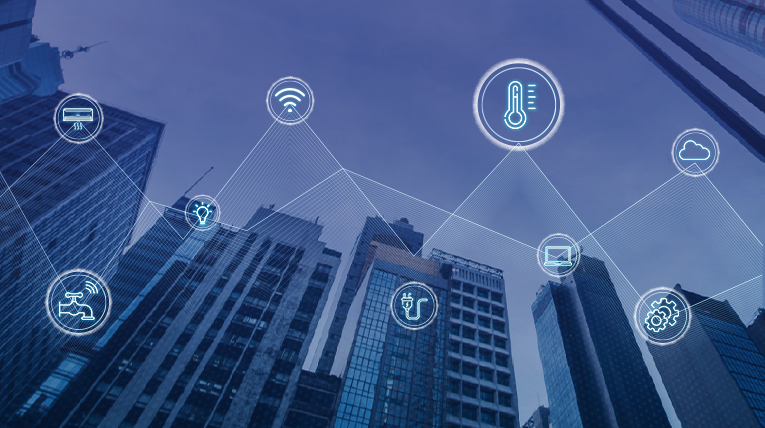The Industrial Internet of Things (IIoT), often known as Industry 4.0, is transforming how organizations, particularly industrial enterprises, function. As businesses go digital, a chasm appears between their physical and digital assets which are bridged by IIoT. This gives a wealth of data that may be utilized to enhance innovation, improve performance, and drive better decision-making. It uses smart sensors and actuators to improve manufacturing and industrial processes, converting traditional machines into smart machines and automating the management of the assets. Smart Industries are not only better at gathering and processing data in real-time but also better at transmitting vital data that can be useful to make business decisions faster and more precisely.
Here is what is making a buzz in the world of IIoT:
- Building Management System (BMS):
BMS is a centralized management system for vital infrastructure equipment such as air conditioning, lighting, power systems, etc. that ensures a secure and efficient flow of activities.
Using a well-established network of various Sensors and Sensor Managers, BMS plays a critical role in the administration of industrial infrastructures. BMS helps companies automate environmental management, enhance sustainability, provide real-time analytics, and optimize comfort and security.
In a typical BMS environment, OEMs need a variety of sensors such as water leak sensor, temperature and humidity sensor, motion sensor, window, and door sensor, etc. These can be installed within any infrastructure to capture environmental data that can then be utilized to manage and monitor the various elements inside a facility. While traditional BMS systems for HVAC, lighting control, access control, and fire detection systems use BACnet protocols, the new age BMS solutions may also use other protocols such as Modbus. Hence, backward compatibility with the existing infrastructure will be critical for new BMS systems.
Cloud is an integral part of BMS which does all the analytics by collecting data from the sensors and sensor managers. As the solution scales, the cloud needs to adopt new technologies such as containerization and Kubernetes for security, stability, and scalability in a cost-efficient manner.
- Smart HVAC (Heating, Ventilation, Air Conditioning) System:
The purpose of an HVAC system is to manage the environment in which it operates. It accomplishes this by using heating and cooling to regulate the temperature of a space. By regulating the flow and distribution of air inside the space, it also regulates the humidity level in that setting via sensors deployed on floors that includes air quality sensor, humidity sensor, etc.
Earlier, different sensors were connected via cables that significantly impact the operational and maintenance cost. Today, enterprises and HVAC manufacturers are moving towards Smart HVAC systems that use wireless technologies such as BLE, Sub-GHz, and Zigbee. Implementing topologies such as BLE Mesh helps to create a well established network of connected sensors. The sensors communicate to one another via BLE mesh to send the data over to the cloud for necessary actions. Also, the wireless system is easier to install as compared to the wired system and results in lower operating costs and greater energy efficiency.
- Smart Industrial Gateways:
Industrial IoT gateways are the backbone of any successful Industrial IoT solutions. They act as a communication bridge between Sensors networks, and cloud servers. The gateways take care of device configuration, device authentication for secure network access, and edge analytics.
The Industrial Gateways support a number of communication protocols like BLE, Zigbee, Thread, Z-Wave, MQTT, Modbus, BACnet, and PROFINET, etc. These gateways enable sensors, actuators, and other Industrial IoT devices to send data to the cloud server.
Traditional gateways were designed to facilitate communication between the devices and send the data to the cloud server for performing data analytics. Today, the next generation of gateways are capable of taking action on the data received from the sensors and other IoT devices and support data analytics at the edge. The latest gateways are capable of pulling up high-priority information and taking necessary actions. This function significantly improves the overall performance and system responsiveness.
How can VVDN help OEMs looking for Industrial IoT (IIoT) Solutions?
When it comes to Industrial IoT, VVDN leverages its vast expertise in designing and developing customized end-to-end IIoT solutions in the domains of Building Control Automation, Smart HVAC, Transport and Logistics, Power & Utilities, etc. We also help OEMs design and deliver customized Industrial IoT gateways according to their specific use case and requirements.
Click here to know more about the VVDN’s Industrial IoT capabilities.

























